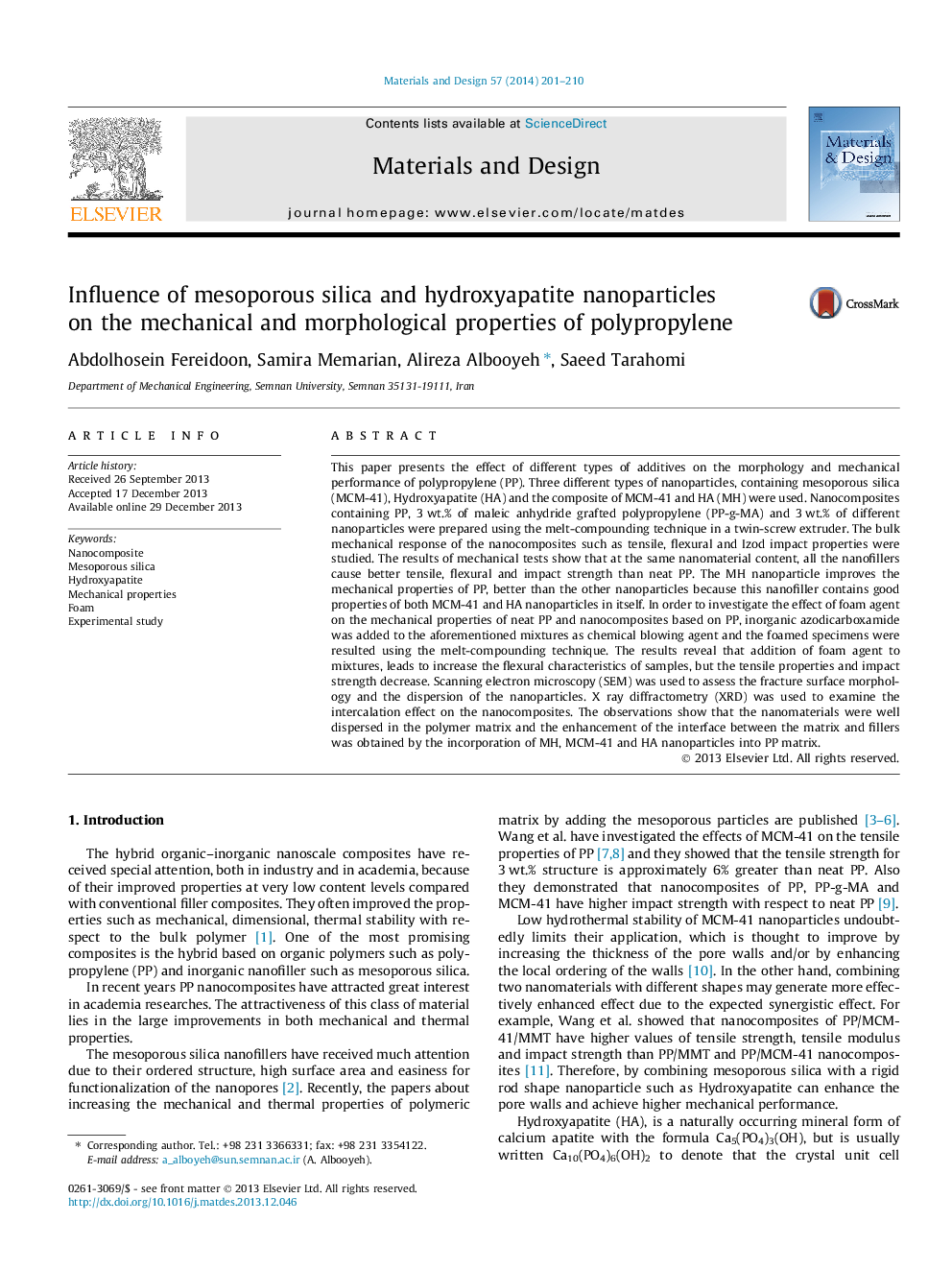| کد مقاله | کد نشریه | سال انتشار | مقاله انگلیسی | نسخه تمام متن |
|---|---|---|---|---|
| 829338 | 1470340 | 2014 | 10 صفحه PDF | دانلود رایگان |
• We propose a new nanofiller by combining MCM-41 and HA, naming MH.
• PP/MH nanocomposite has high mechanical properties compared to PP/MCM-41and PP/HA.
• Foamed nanocomposites have higher flexural properties than unfoamed nanocomposites.
• Adding foam agent leads to lower tensile and impact properties.
• SEM micrographs show better dispersion of MH nanoparticles in the PP matrix.
This paper presents the effect of different types of additives on the morphology and mechanical performance of polypropylene (PP). Three different types of nanoparticles, containing mesoporous silica (MCM-41), Hydroxyapatite (HA) and the composite of MCM-41 and HA (MH) were used. Nanocomposites containing PP, 3 wt.% of maleic anhydride grafted polypropylene (PP-g-MA) and 3 wt.% of different nanoparticles were prepared using the melt-compounding technique in a twin-screw extruder. The bulk mechanical response of the nanocomposites such as tensile, flexural and Izod impact properties were studied. The results of mechanical tests show that at the same nanomaterial content, all the nanofillers cause better tensile, flexural and impact strength than neat PP. The MH nanoparticle improves the mechanical properties of PP, better than the other nanoparticles because this nanofiller contains good properties of both MCM-41 and HA nanoparticles in itself. In order to investigate the effect of foam agent on the mechanical properties of neat PP and nanocomposites based on PP, inorganic azodicarboxamide was added to the aforementioned mixtures as chemical blowing agent and the foamed specimens were resulted using the melt-compounding technique. The results reveal that addition of foam agent to mixtures, leads to increase the flexural characteristics of samples, but the tensile properties and impact strength decrease. Scanning electron microscopy (SEM) was used to assess the fracture surface morphology and the dispersion of the nanoparticles. X ray diffractometry (XRD) was used to examine the intercalation effect on the nanocomposites. The observations show that the nanomaterials were well dispersed in the polymer matrix and the enhancement of the interface between the matrix and fillers was obtained by the incorporation of MH, MCM-41 and HA nanoparticles into PP matrix.
Journal: Materials & Design - Volume 57, May 2014, Pages 201–210
